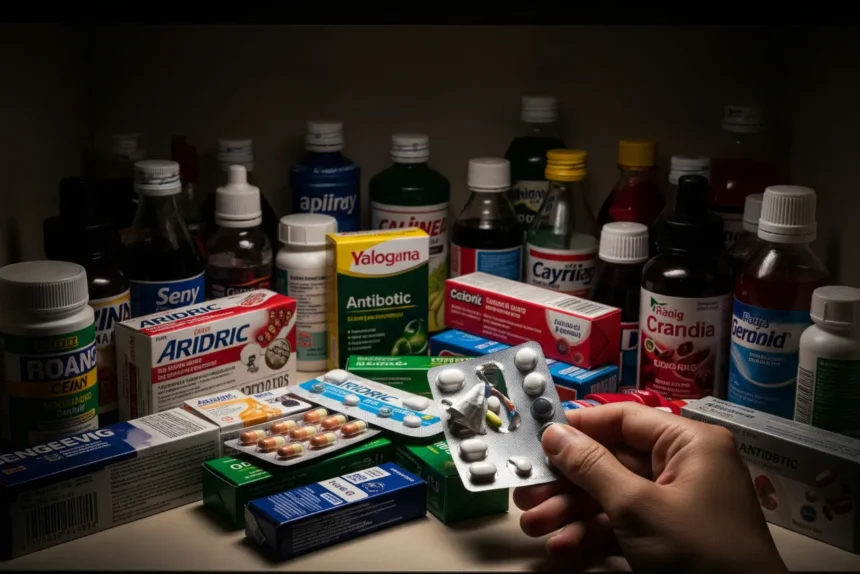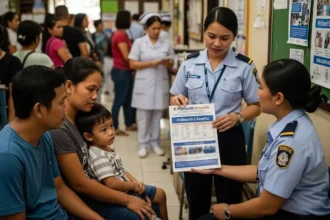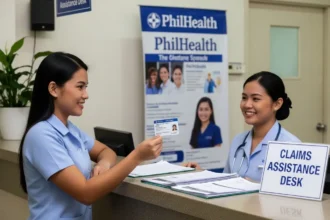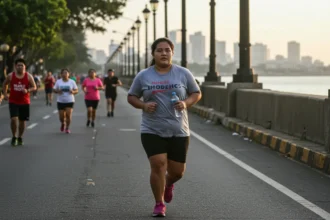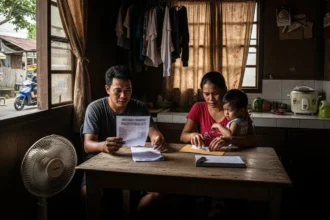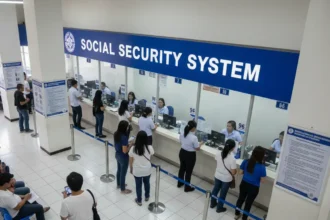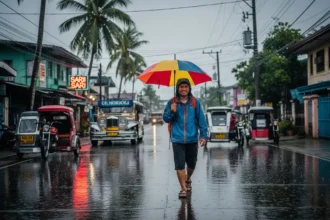In many Filipino households, medicine is as common as rice in the pantry. A headache? Pop a paracetamol. A cough? Grab the nearest syrup. Diarrhea? There’s loperamide somewhere in the drawer. For generations, self-medication has been a cultural habit – born out of practicality, lack of time, and limited access to affordable healthcare. Pharmacies are everywhere, and most drugs are available over the counter without much restriction, making self-treatment an easy option.
- 💊 Why Self-Medication is So Common in the Philippines
- ⚠️ The Hidden Risks of Self-Medication
- 🩺 Commonly Self-Medicated Drugs
- 🧪 Government Stance on Self-Medication
- 👨👩👧 Family Dynamics and Self-Medication Culture
- 🌍 How Other Countries Handle Self-Medication
- ✅ The Pros of Self-Medication (When Done Responsibly)
- ❌ The Cons and Serious Risks of Self-Medication
- 🛡 Security Measures That Could Protect Public Health
- Frequently Asked Questions about the Dangers of Self-Medication in the Philippines
- 🌱 A Call for Smarter Health Choices
But this convenience carries hidden dangers. Filipinos often underestimate how risky self-medication can be – whether it’s misdiagnosing an illness, overusing antibiotics, or mixing drugs that should never be taken together. Some pay the ultimate price: delayed treatment of serious conditions or long-term complications that could have been avoided. The dangers of self-medication in the Philippines are not just a medical issue, but also a social, cultural, and economic problem that demands urgent attention.
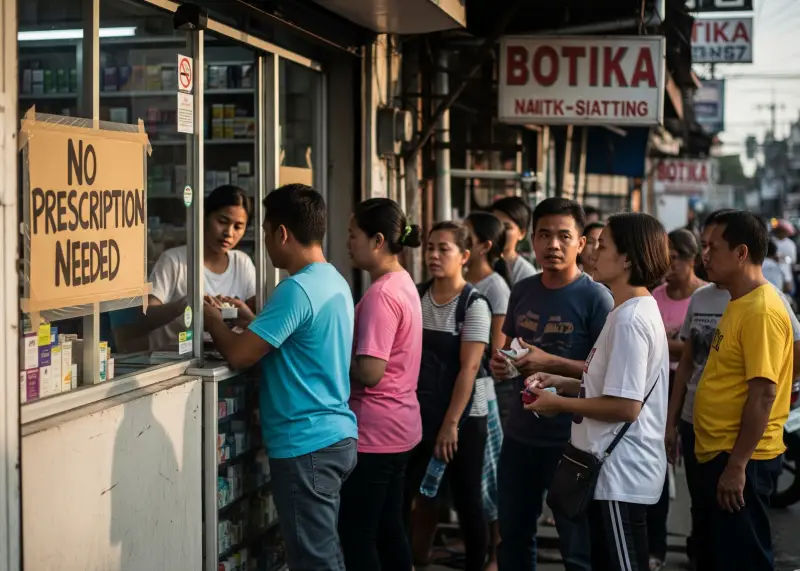
💊 Why Self-Medication is So Common in the Philippines
Self-medication is rooted in the everyday struggles of Filipino families. For many, going to a doctor feels like an unnecessary expense. With consultation fees ranging from ₱300 to ₱800 – not to mention lab tests and prescriptions – it’s easy to see why people opt for cheaper alternatives. Pharmacies allow easy access, and tindahans often sell single sachets of medicine, making drugs even more affordable.
There’s also a cultural element. Filipinos grew up with “home remedies” and a mentality that common ailments can be treated without professional help. Many also rely on advice from kapitbahays, friends, or relatives who claim that a certain brand of antibiotic or pain reliever worked for them. While these practices may provide temporary relief, they often mask more serious health issues.
A story often told in rural barangays is of a father who kept taking paracetamol for recurring headaches, thinking it was just pagod. When he finally visited a doctor, it turned out he had hypertension – a condition that had worsened because of delayed medical attention. Stories like this aren’t rare; they illustrate why this habit remains dangerous.
⚠️ The Hidden Risks of Self-Medication
Self-medicating can feel harmless, but it comes with risks that can range from mild to life-threatening.
Main dangers include:
- Misdiagnosis of serious conditions (e.g., chest pain mistaken for simple acid reflux).
- Drug resistance, especially with improper antibiotic use.
- Side effects from mixing medications without guidance.
- Allergic reactions to drugs not suitable for the patient.
- Delayed diagnosis leading to worse outcomes.
Antibiotic Resistance: A Growing Crisis
One of the gravest dangers comes from antibiotic misuse. Many Filipinos buy antibiotics without a prescription or stop taking them once they feel better. This incomplete dosage allows bacteria to survive and mutate, leading to drug-resistant infections. The World Health Organization has repeatedly warned that the Philippines faces rising antibiotic resistance, which could render common infections untreatable in the future.
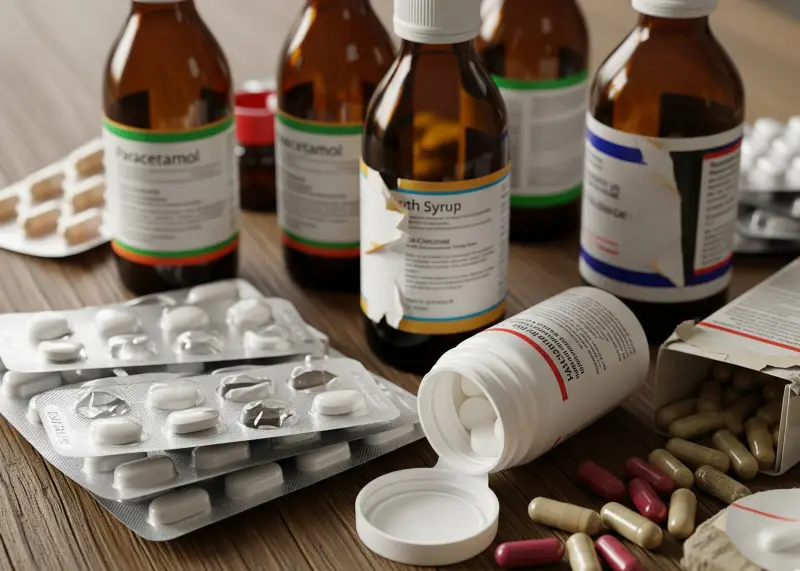
🩺 Commonly Self-Medicated Drugs
Certain medications are more prone to misuse because of their accessibility.
| Type of Medicine | Common Use | Risks When Misused |
|---|---|---|
| Paracetamol | Fever, pain relief | Overdose can cause liver damage |
| Ibuprofen | Pain, inflammation | Risk of ulcers, kidney problems |
| Antibiotics (Amoxicillin, etc.) | Infections | Resistance, allergic reactions |
| Loperamide | Diarrhea | May mask serious infections |
| Cough Syrups | Cough, colds | Overdose risk, dependency |
The table shows how easy it is to misuse even common drugs. What seems harmless may actually put health at risk when taken without proper knowledge or dosage control.
🧪 Government Stance on Self-Medication
The Philippine government has repeatedly warned about the dangers of self-medication, but enforcement remains a challenge. The Food and Drug Administration (FDA) requires prescriptions for antibiotics, yet many pharmacies still sell them freely. Campaigns by the Department of Health (DOH) aim to educate the public, but cultural habits and convenience often outweigh caution.
Moreover, healthcare access remains unequal. In Metro Manila, clinics and hospitals are easy to find, but in far-flung provinces, a doctor might only visit once a week. This disparity fuels the reliance on self-medication as the default option. Without structural reforms, education campaigns alone may not be enough.
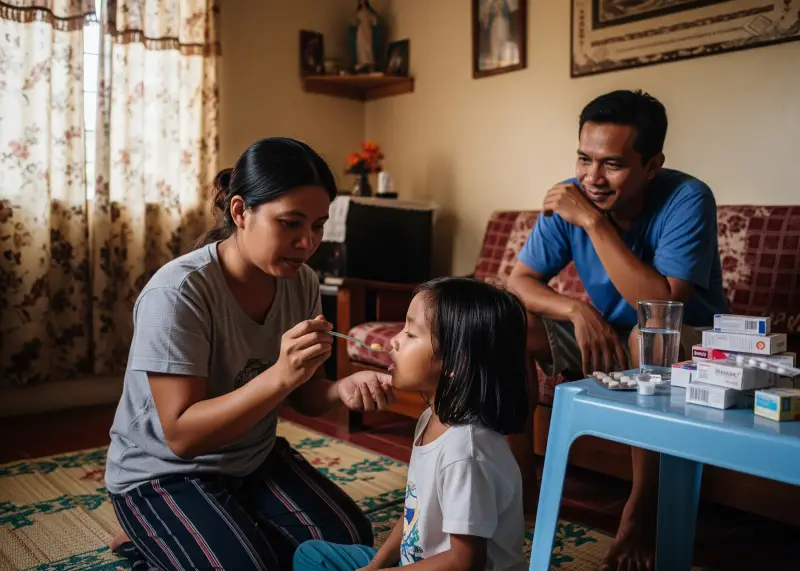
👨👩👧 Family Dynamics and Self-Medication Culture
In Filipino households, medical decisions are often made collectively. Parents frequently make the call for their kids, and children grow up copying these habits. A mother might give her child the same medicine she used last time without consulting a doctor, believing it’s safe because “gumana naman noon.”
This culture of reusing old prescriptions or relying on leftover antibiotics strengthens the cycle of self-medication. Worse, children grow up seeing it as normal, passing the practice down to the next generation.
In a Cavite household, for instance, a young man admitted he never once visited a doctor for flu. His family would simply stockpile antibiotics, taking them whenever someone got sick. Only when his condition worsened and required hospitalization did they realize the risks.
🌍 How Other Countries Handle Self-Medication
Self-medication is a global issue, but how countries handle it differs.
- Japan: Strict rules – antibiotics cannot be purchased without a prescription, and even basic meds are regulated.
- United States: Over-the-counter drugs are common, but prescriptions are required for antibiotics and strong painkillers.
- India: Like the Philippines, self-medication is widespread due to poverty and easy access to drugs.
The comparison shows that stricter pharmacy regulations and affordable healthcare services play a big role in reducing misuse. The Philippines could learn from these models, especially when it comes to balancing access with safety.
✅ The Pros of Self-Medication (When Done Responsibly)
1. Saves Time and Money for Minor, Recognizable Illnesses For common, non-threatening conditions like a mild headache, a common cold, or a minor muscle strain, self-medication can be highly practical. It allows individuals to avoid the time and expense of a doctor’s visit, which includes consultation fees, transportation costs, and time taken off from work. Instead of waiting for an appointment, a person can quickly purchase an affordable, appropriate OTC remedy from a local pharmacy.
2. Provides Quick and Accessible Relief for Common Ailments When you wake up with a stuffy nose, a sore throat, or menstrual cramps, immediate relief is the priority. Self-medication provides a swift and accessible solution. Over-the-counter medications like paracetamol for fever, ibuprofen for pain, or antihistamines for allergies are readily available and effective for managing the symptoms of these familiar ailments, allowing individuals to continue with their daily activities with minimal disruption.
3. Empowers Patients to Take Responsibility for Their Health Responsible self-medication can foster a sense of empowerment and increase health literacy. When individuals take the time to read labels, understand dosages, and recognize the symptoms of recurring, minor conditions (like seasonal allergies or migraines), they become more engaged and proactive participants in their own healthcare. This can lead to a better understanding of their bodies and a greater sense of control over their well-being.
❌ The Cons and Serious Risks of Self-Medication
1. High Risk of Developing Drug Resistance This is one of the most dangerous consequences, particularly with the misuse of antibiotics. Many people mistakenly take leftover antibiotics for viral infections like the common cold, where they have no effect. This unnecessary exposure allows bacteria in the body to adapt and develop resistance. When a person later develops a serious bacterial infection, the same antibiotic may no longer be effective, leading to more severe illness and the need for stronger, more expensive drugs. This contributes to the global public health crisis of antimicrobial resistance.
2. Potential for Dangerous Side Effects and Adverse Reactions Every drug has potential side effects. Without a doctor’s guidance, a person may choose a medication that is inappropriate for their underlying health conditions. For example, someone with a history of stomach ulcers should not take certain painkillers like ibuprofen, as it can cause severe gastric bleeding. There is also a high risk of incorrect dosage-taking too much can lead to toxicity and organ damage, while taking too little can be ineffective. Furthermore, there is a danger of harmful interactions with other medications, supplements, or even certain foods.
3. May Worsen the Condition or Delay a Proper Diagnosis Treating symptoms without understanding the root cause is a significant gamble. A persistent cough, for instance, could be a simple bronchitis, but it could also be an early sign of tuberculosis or lung cancer. By self-medicating with cough syrup, a person might get temporary relief, but they are allowing the more serious underlying disease to progress untreated. This delay can lead to more complicated health outcomes and reduce the effectiveness of future treatments.
4. Can Mask the Symptoms of a Life-Threatening Illness This is perhaps the most immediate danger. Self-medication can act as a temporary band-aid, hiding the warning signs of a serious medical emergency. For example, taking a strong painkiller for severe abdominal pain might mask the symptoms of appendicitis. By the time the pain becomes too severe to ignore, the appendix may have already ruptured, leading to a life-threatening infection. Similarly, what seems like simple heartburn could be a symptom of a heart attack, and taking an antacid could provide a false sense of security, delaying critical emergency care.
While the convenience of self-medication for minor issues is undeniable, its risks far outweigh the benefits when practiced without caution and proper knowledge. It should be reserved only for familiar, non-severe ailments. For any new, persistent, or severe symptoms, consulting a healthcare professional is always the safest and most effective course of action.
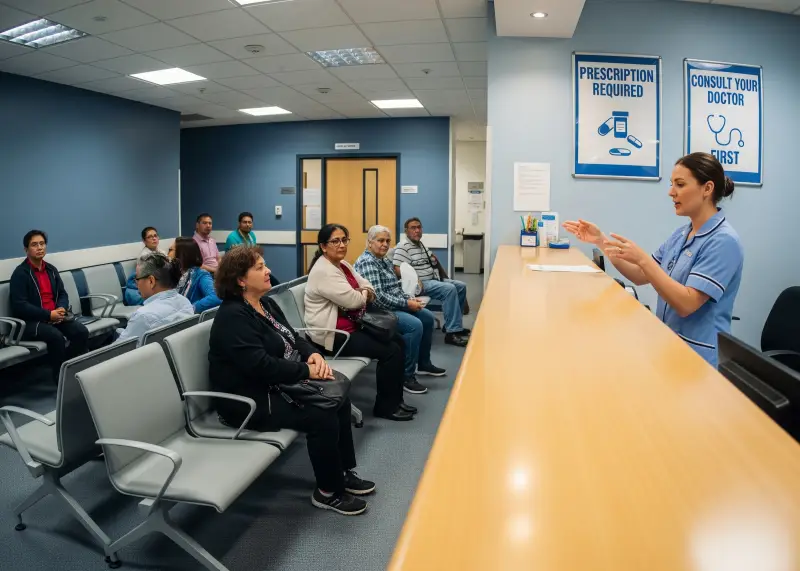
🛡 Security Measures That Could Protect Public Health
To minimize risks, experts recommend:
- Stricter enforcement of prescription-only sales.
- Public health campaigns to raise awareness about dangers.
- Expanding PhilHealth and free community clinics for affordable consultations.
- Training pharmacists to educate buyers before selling drugs.
- Encouraging families to keep medicine logs for dosage tracking.
Such steps won’t completely eliminate self-medication, but they can reduce its dangers and make healthcare safer for all.
Frequently Asked Questions about the Dangers of Self-Medication in the Philippines
- Why do many Filipinos self-medicate instead of going to a doctor?
Because it feels cheaper, faster, and more convenient-clinic fees, lab tests, and prescriptions can add up. Also, many Filipinos grew up seeing neighbors or family members just using leftover meds or over-the-counter drugs, so it becomes the “default” when feeling unwell. - Is self-medication always bad?
Not always. For very mild issues like a mild headache, minor cold, or occasional muscle pain, using over-the-counter medicines responsibly can help. The risks grow when people misdiagnose themselves, use strong drugs without guidance, or ignore serious symptoms. - What are the biggest risks of self-medicating with antibiotics?
One top danger is antibiotic resistance-stopping the course early or using antibiotics unnecessarily lets bacteria survive and adapt. Also, you might be taking the wrong drug for a condition, which makes things worse or delays real treatment. - Which common medicines are most misused in self-medication?
Painkillers like paracetamol or ibuprofen; cough syrups; antacids; sometimes diarrhea medicines (like loperamide); and quite a lot of antibiotic use without prescription. Even “harmless” meds can damage liver, stomach, or other organs if used wrongly. - What happens if someone masks serious symptoms by self-medicating?
Symptoms get hidden, so people delay seeking medical help. For example, stomach pain might just be gas-or it could be something much worse. If masked, the underlying condition might worsen, sometimes to a life-threatening stage. - How are children particularly vulnerable to the dangers of self-medication?
Because doses meant for adults are sometimes given, or medicines not safe for their age. Children’s bodies are still developing, so side effects can hit them harder. Also, they might not be able to express how they feel, which can delay recognition of bad reactions. - What role does culture and family play in promoting self-medication?
Big role. Advice gets passed down in families (“use what we used before”, “this cough syrup always works”) without checking first with a health professional. Also, many believe that if something worked once, it’ll always work, so leftover meds are reused. - What is the government doing about this problem?
There are laws requiring prescriptions for certain drugs (especially antibiotics), and health campaigns to educate people on risks. But enforcement is weak in many areas-some pharmacies still sell prescription-only meds without one. Also, healthcare access in remote areas is limited, which perpetuates the practice. - What safer options do Filipinos have besides self-medicating?
Visiting barangay health centers, free medical missions, using PhilHealth benefits, consulting a trained pharmacist, or a telehealth consultation. Even local clinics or rural health units often offer care with lower fees or sliding scale. The key is recognizing when something is more than “just a minor ailment.” - How can someone know when self-medication is no longer enough and they should see a doctor?
If symptoms persist more than a few days, get worse instead of better, or new worrying signs appear (high fever, severe pain, breathing difficulty, etc.). Also, if it’s a recurring problem, or if the person has other health-conditions (diabetes, heart issues), it’s safer to consult a medical professional early.
🌱 A Call for Smarter Health Choices
The dangers of self-medication in the Philippines show us a troubling reality: when healthcare feels out of reach, Filipinos turn to risky shortcuts. While popping a pill may bring short-term relief, the long-term costs – from drug resistance to undiagnosed diseases – are too high to ignore.
As a nation, we need not just stricter enforcement of drug sales but also more affordable and accessible healthcare options. Families must also take responsibility, moving away from old habits and choosing safer practices for their health. After all, the goal isn’t to stop people from seeking relief – it’s to make sure that relief doesn’t come at the cost of their future well-being.



